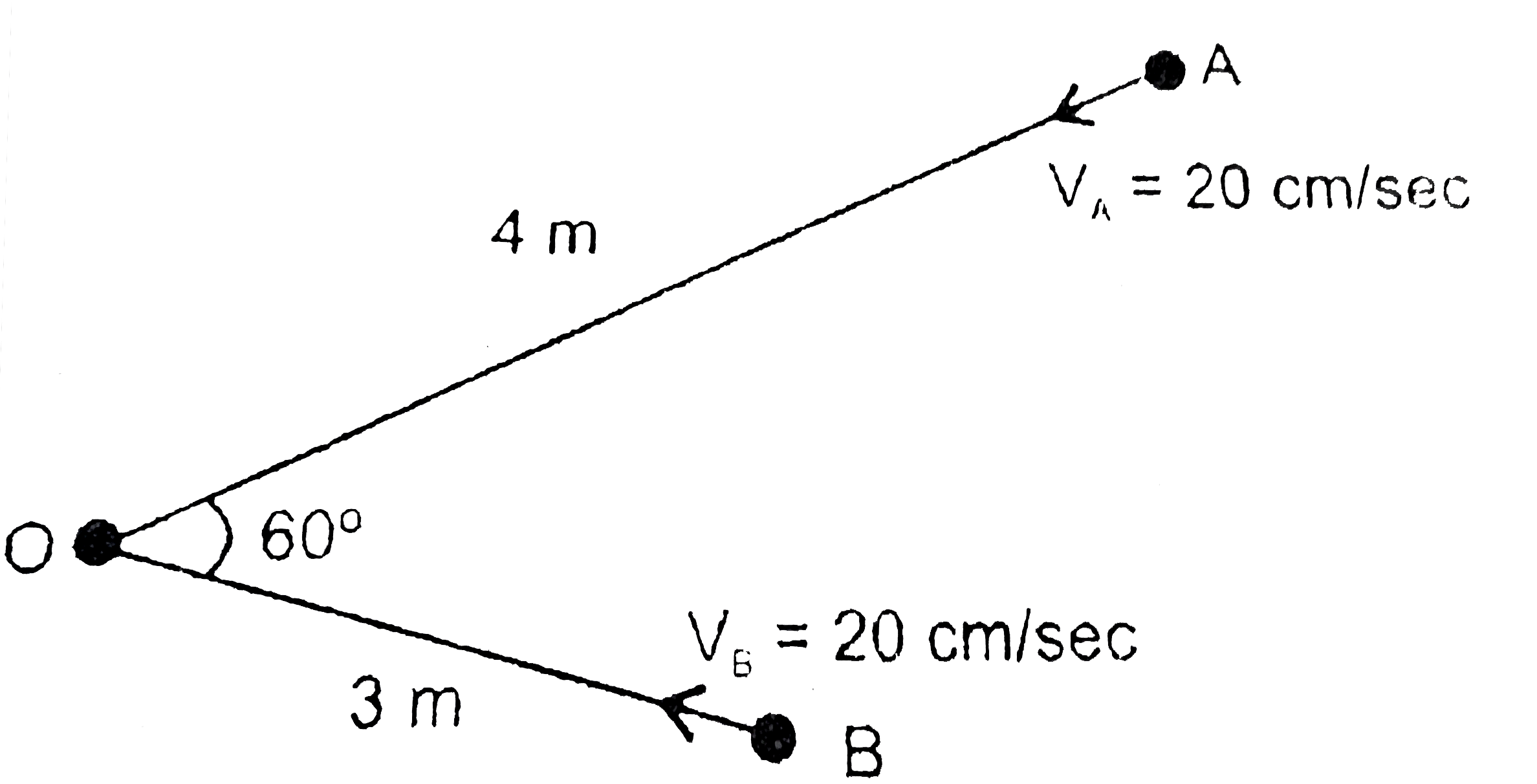Two particles start moving from the same point along the same straight line. The first moves with constant velocity v and the second with constant acceleration a. During the time that elapses before the sound catches the first, the greatest distance between the particle is.
v2a
v22a
2v2a
v24a
The correct Answer is:B
To solve the problem step by step, we will analyze the motion of both particles and find the maximum distance between them before one catches up to the other.
Step 1: Define the motion of both particles
- Particle 1 moves with a constant velocity v.
- Particle 2 starts from rest and moves with a constant acceleration a.
Step 2: Write the equations of motion
- The position of Particle 1 after time t is given by:
s1=vt
- The position of Particle 2 after time t is given by:
s2=12at2
Step 3: Find the relative displacement
- The distance between the two particles at any time t is:
s=s1−s2=vt−12at2
Step 4: Maximize the distance
- To find the maximum distance, differentiate s with respect to t and set the derivative equal to zero:
dsdt=v−at=0
- Solving for t:
at=v⟹t=va
Step 5: Substitute t back into the distance equation
- Now substitute t=va back into the distance equation:
smax=v(va)−12a(va)2
- Simplifying this:
smax=v2a−12a⋅v2a2=v2a−v22a=v22a
Step 6: Conclusion
- The maximum distance between the two particles before the second catches up to the first is:
smax=v22a
- Particle 1 moves with a constant velocity v.
- Particle 2 starts from rest and moves with a constant acceleration a.
- The position of Particle 1 after time t is given by:
s1=vt
- The position of Particle 2 after time t is given by:
s2=12at2
- The distance between the two particles at any time t is:
s=s1−s2=vt−12at2
- To find the maximum distance, differentiate s with respect to t and set the derivative equal to zero:
dsdt=v−at=0
- Solving for t:
at=v⟹t=va
- Now substitute t=va back into the distance equation:
smax=v(va)−12a(va)2
- Simplifying this:
smax=v2a−12a⋅v2a2=v2a−v22a=v22a
- The maximum distance between the two particles before the second catches up to the first is:
smax=v22a
Topper's Solved these Questions
- KINEMATICS 1BOOK - DC PANDEY ENGLISHCHAPTER - KINEMATICS 1EXERCISE - MCQ_TYPE
27 Videos
- KINEMATICS 1BOOK - DC PANDEY ENGLISHCHAPTER - KINEMATICS 1EXERCISE - COMPREHENSION_TYPE
19 Videos
- KINEMATICSBOOK - DC PANDEY ENGLISHCHAPTER - KINEMATICSEXERCISE - INTEGER_TYPE
10 Videos
- LAWS OF MOTIONBOOK - DC PANDEY ENGLISHCHAPTER - LAWS OF MOTIONEXERCISE - Medical entrances gallery
39 Videos
Similar Questions
Two bodies start moving in the same straight line at the same instant of time from the same origin. The first body moves with a constant velocity of 40ms−1, and the second starts from rest with a constant acceleration of 4ms−2.Find the time that elapses before the second catches the first body. Find the also the greatest distance between them prior to it and time at which this occurs.
View SolutionA particle is moving with a constant speed along a straight line path. A force is not required to
View SolutionA particle starting from rest moves along a straight line with constant acceleration for this velocity displacement graph will have the form-
View SolutionA particle start moving from rest state along a straight line under the action of a constant force and travel distance x in first 5 seconds. The distance travelled by it in next five seconds will be
View SolutionA particle moves along a straight line path. After some time it comes to rest. The motion is with constant acceleration whose direction with respect to the direction of velocity is :
View SolutionA particle moves along a straight line path. After some time it comes to rest. The motion is with constant acceleration whose direction with respect to the direction of velocity is :
View SolutionTwo particles move with constant velocities towards point O along straight lines in a plane as shown. The shortest distance A and B is

View SolutionA particle moving with a uniform acceleration along a straight line covers distances a and b in successive intervals of p and q second. The acceleration of the particle is
View SolutionA particle starts moving from position of rest under a constant acceleration. If it travels a distance x in t second, what distance will it travel in next t second?
View SolutionTwo objects are moving along the same straight line. They cross a point A With an acceleration a, 2a and velocity 2u, u at time t=0. The distance moved by the object when one overtakes the
View Solution
